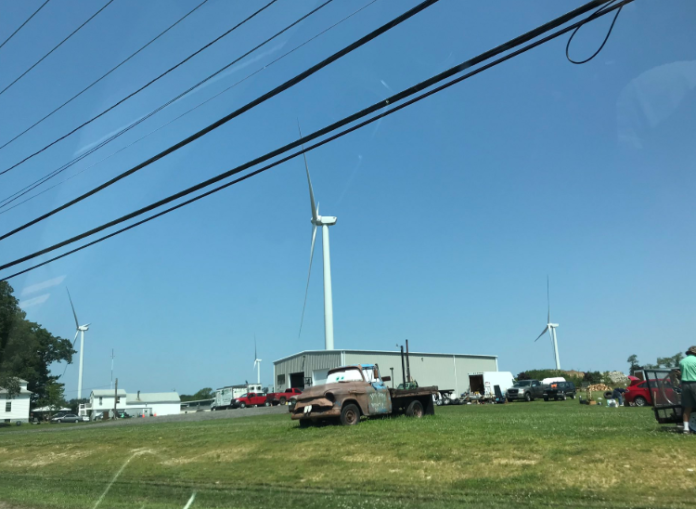The U.S. Department of Energy’s (DOE’s) Pacific Northwest National Laboratory (PNNL) has issued its annual report on distributed wind power, showing that the U.S.’ installed capacity stands at 1,127 MW from over 83,000 turbines across all 50 states, Puerto Rico, the U.S. Virgin Islands and Guam.
PNNL explains that distributed wind is clean energy generated where it is used, as opposed to power sent through transmission lines and substations. This wind power is consumed on-site by homes, schools, farms and businesses, for example. In 2018, 12 states added 50.5 MW of distributed wind capacity from 2,684 turbines, representing a $226 million investment, the report says.
The 2018 Distributed Wind Market Report highlights the very small wind turbines of less than 1 kW in size that accounted for 99% of the total turbines and 47% of small wind project capacity deployed in 2018. These turbines are commonly coupled with energy storage or solar PV systems, notes PNNL.
“As the number of small wind turbines deployed in the one- to-100-kilowatt size range has been generally decreasing, the number of deployed turbines with a capacity rating of less than one kilowatt has stayed fairly steady,” says Alice Orrell, who led the study at PNNL. “As a result, these less-than-one-kilowatt turbines, which mainly provide remote power for off-grid locations, now account for a larger share of the small wind market.”
On the other end of the size spectrum, turbines greater than 1 MW in size are commonly used for government, commercial, industrial and utility customers, PNNL explains. Distributed wind projects using large-scale turbines and serving utility companies that power homes made up 47% of the distributed wind capacity deployed in 2018. Another 29% was used by commercial and industrial customers – up from 9% in 2017 and 5% in 2016.
Typically using smaller turbines that are no larger than 100 kW, agricultural and residential customers accounted for just 1% of the documented capacity, the report adds.
Further, projects using turbines with greater than 100 kW of wind capacity accounted for 49 MW of the 50.5 MW of distributed wind capacity installed in 2018.
Texas, Iowa and Minnesota are the top three states for overall distributed wind capacity, and Iowa, Nevada and Alaska are the top three states for small wind capacity, although there were no new documented projects in Iowa or Nevada in 2018. Rhode Island, Ohio and Nebraska led the U.S. in new distributed wind power capacity in 2018 with large-scale turbine projects. Green Development LLC added 21 MW of distributed wind to its portfolio in Rhode Island in 2018, accounting for almost half of the documented 2018 distributed wind capacity and almost doubling Rhode Island’s cumulative distributed wind capacity.
New York and Alaska had the most reported small wind projects in 2018. New York has been a leader in small wind capacity deployment in past years because of its New York State Energy Research and Development Authority small wind turbine incentive program, the report points out.
In terms of cost, the levelized cost of distributed wind energy was 23 cents/kWh for documented small wind projects, 14 cents/kWh for midsize turbine projects and 5 cents/kWh for large-scale turbines.
Now in its seventh year, the Distributed Wind Market Report was funded by the DOE’s Wind Energy Technologies Office. More on the report can be found here.




